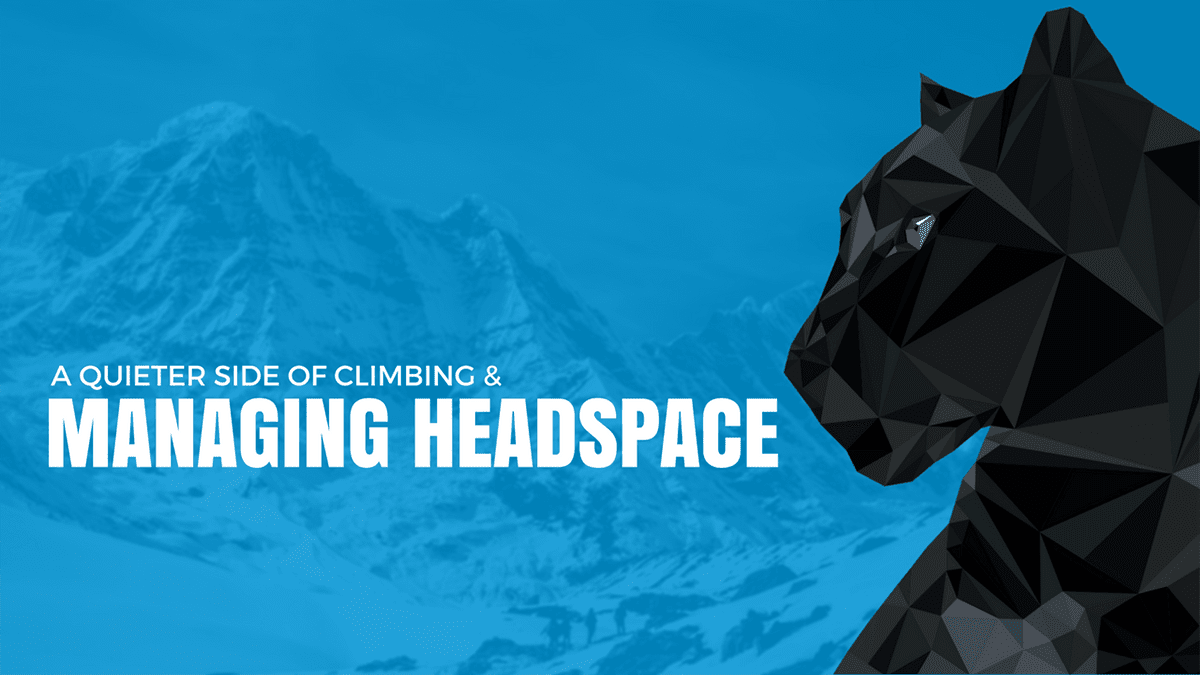A Quieter Side of Climbing and Managing Headspace

When many people think of climbing, they think of it as mainly a social activity. On the other hand, many people believe that climbing is primarily a physically demanding sport and they don’t often consider the mental challenges it can provide. While both these things are true – (most of the time climbing is done with friends or in a social environment), and I won’t argue the fact that fighting with gravity is pretty physically demanding – there is another side to climbing and fighting with your head can frequently prove more challenging than defying gravity.

International competitions often crown their winners in bouldering over one attempt. In routes, the winner sometimes wins by as little as half a move. In these competitions, most of the top climbers climb at the same level or very similarly in difficulty. So the winner is decided by things like, which climber manages to avoid getting shaky and falling at the sketchy start of a route. Who gets to the point where their body is physically exhausted but has the mental capacity to push herself two moves higher.? Who sees the clock ticking down in a bouldering competition and, on their last try, can try their hardest with no fear of falling? That is where my biggest challenges come into play. I know I am usually physically prepared and ready for the event, but I have trouble pushing myself to my limit while letting go of my fear of failure.
Taking a step down from the World Cup, many people are merely afraid of falling or of being judged by others when they fall. These are also headspace issues and will hold a climber back more than her physical abilities will. Someone can boulder v14, but if he is too afraid to face falling, then they won’t even be able to climb a scary and runout 5.10.
Enough with the problem and onto the solution! While there is no clear solution, there are some things I’ve noticed that have helped me. The main one being that I spend a lot of time climbing alone, and when I climb alone, I focus on myself more and not on other people. I can clearly see what I’m doing well and where I’m currently lacking. I also don’t think about things like not being able to do a move or falling as I might if other people are around. It is even more helpful for me to go outside and climb on some boulders in the middle of nowhere, alone and surrounded by nothing but pristine forest and endless wilderness.
I am lucky enough to call Vancouver Island home. For those of you that haven’t been here or heard of it, it is comprised of a few small cities, and the rest of the island is all forests. These forests have endless bouldering potential and just one downfall – an extremely rainy climate. Thoughts of, ‘Am I strong enough?’, are quickly replaced by, ‘I am enjoying this moment.’ After that, the only fears that remain are that of the small chance of becoming

a cougar’s dinner or getting surrounded by wolves and becoming even more skinny and bony than I already am!
So the next time you notice your headspace isn’t great in a comp or just climbing in general, take a few days and climb by yourself. Or, simply spend time outside by yourself, and some of that stress will turn into positive energy.
If none of that works, then there’s always the wolves and cougars that can help you become lighter and therefore send projects.
Be sure to follow Elan on Instagram for his latest comps and adventures.




